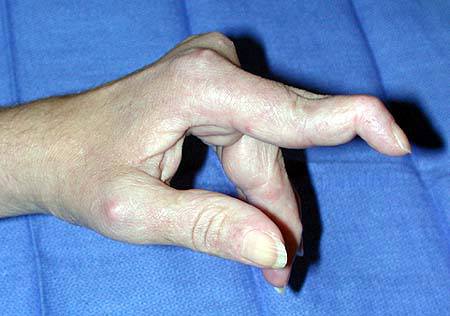Common Infections in children

Early childhood is a period where infections are frequent. Some are minor infections while others may be severe. The minor infections are more common and most of them are self resolving. The viral infections are most common. Bacterial and protozoal infections need therapy in most cases.
Here are common illness from 2 months to 5 years age:
Common Cold and flu:
Common cold is a mild and self limitting infection of upper respiratory tract. It is most common childhood infection and is caused by a group of viruses. Rhino virus is well known virus causing it. Symptoms are mild – low grade fever, some myalgia, burning nose and stuffy nose, running nose, sometimes throat discomfort and cough. Home remedies and symptomatic management like nasal clearing, warm fluids and hydration and rest is all that is needed. COVID19 has been a big issue recently.
Flu is caused by Influenza virus. The symptoms include, severe bodyache, headache, high fever, chills and rigors, sore throat, cold and cough. Usually it is self resolving. Less common but complications include bacterial pneumonia, acute respiratory distress syndrome and respiratory failure. Since vaccines are now available , the severity and death associated with flu has decreased. The variants like Swine flu, Avian flu are more severe compared to seasonal flu.
2. Ear or Eye Infections: Ear infection is usually assoicated with upper respiratory tract infections like cold. The blockage of eustachean tube connecting middle ear cavity and throat predisposes to infection. Besides that other risk factors like exposure to smoking, immune deficiency diseases, swimming etc can cause an infection. Symptoms are ear pain, fullness, decrease hearing and flow of watery discharge or pus. Swimmer’s ear is infection of external ear canal and common with recreational water activities.
Eye infection- conjuctivitis is once in a while disease. Usually contracted from others or adults, from day care centers, preschools or play groups. Symptoms are redness of one or both eyes, tears, eye discharge, photosensitivity, burning and sometimes swelling. Pain is less common and if swelling and pain are present should alert a different condition – corneal ulcer, iris inflammation, glaucoma etc. Proper handling of fomites and handwashing is needed. Avoid touching or rubbing eyes.
Gastrointestinal tract infections/infestations: Viral gastroenteritis are common in childhood. Rotavirus is commonest in early childhood but vaccine now avaible can decrease severity. Symptoms of viral diarhha includes- loose stool, vomiting, mild fever, dehydration, perianal skin excoriations and decrease urine if severe. Blood is rarely seen in stool and is unlikely unless there is breaks in skin. Besides that food related illess- food poisoning, protozoal infection and helminth infections can occur in areas where sanitary condition is not good. Developing and underdeveloped countries have children who are prone to GI infections because of malnutrition, poor sanitation, poor water supply and health care facilities.
Skin infections: Infections of skin is common in childhood. Common infections are Candidal diaper rash, folliculitis, furuncles, Impetigo, cellulitis and parasitic infections like Scabies. Impetigo is contagious disease and often contracted from schools, day care centers or playgroups. Skin infections can be minor treatable with local antibiotics, but some conditions may be more severe requiring oral medicines and injectables. Proper hygiene, timely treatment and pet care can help prevent skin infections.
Serious Infections: These are less common but potentially fatal. Timely treatment is needed in these cases.
- Pneumonia- Infection of the lungs is called pneumonia. Bacterial pneumonia caused by Pneumococcus and H Influenze are more concerning. Symptoms include- High grade fever, fast breathing, difficulty breathing, chest retractions, noisy breathing, bad cough, and can present with wheezing. A timely consultation with a pediatrician and managment is needed to prevent complications like effusion ( Fluid/pus collection in pleural space), lung abscess, ARDS, Sepsis and Respiratory failure. Luckily, good vaccines are avaible that has decreased the incidence and death related to pneumonia. Pneumococcal vaccines ( PCV 10, PCV 13, PCV 20) and HiB vaccine are included in routine immunization during childhood.
- Meningitis- infection of meninges- brain covering layer. The disease is highly dangeous in terms of transmission, symptoms, complications and can result in death. Pneumococcus and H Influenzae B are common cause of bacterial meningitis during childhood and vaccines cover for it too. Meningococcus is often fatal infection and needs vaccine. Meningococcal vaccines are available and are included in vaccination schedule. Viral meningitis is more common and less severe, but can be concerning and requires admission.
- Pyelonephritis- infection of kidneys. Childhood pyelonephritis can cause scarring of developing kidneys. E coli is commonest cause. Symptoms can be different in children but usually include high fever, lethargy, vomiting, foul smelling turbid urine, abdominal/back pain and toxic appearance. Immediate Injectable antibiotics are preferred to prevent renal injury.
- Enteric fever and bacillary dysentry- are disease of underdeveloped and developing nations and seldom seen in USA.
- Sepsis- blood stream infection. It is severe condition and can be rapidly fatal. Needs hospitalization and immediate care. Intensive care may be required if there is low blood pressure or other complex symptoms.







